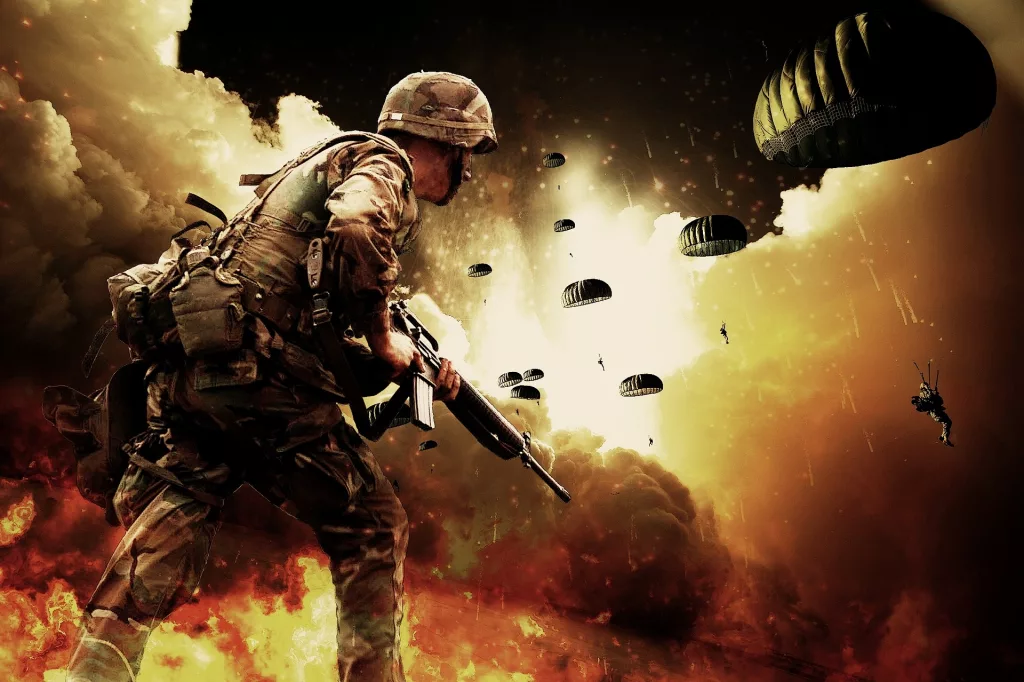This article, which covers 10 deadliest wars in human history, will show you how countless innocent lives have been taken across the globe dating back almost as far as the beginning of civilization. Wars were meant to be fought between nation’s armies; unfortunately, they cause the deaths of millions of civilians and it is tragic when you hear the large number of casualties from war.
Here Are The 10 Deadliest Wars In Human History
- Russian Civil War
The Russian Civil war lasted from 1918 to 1922 in which the Red Army successfully defended the newly formed Bolshevik government led by Vladimir Lenin against the White Army that represented various allied forces, capitalists and supporters of democratic freedom. The Bolsheviks enjoyed more power throughout Russia and hence were able to defeat the White Army. As many as 12 million lives were lost in this war.
- Conquest of Tamerlane
Tamerlane or Timur was a Mongol-Turko conqueror who took advantage of the vacuum created due to the disintegration of the Mongol Empire. He invaded a major part of Eurasia including the Sultanate of Delhi and the Mongolian territories around the Black Seas and Volga. Tamerlane was a crippled bandit who conquered half of the world. His empire was known as the Timurid empire of Central Asia and it generated much terror. The empire had a downfall in the 15th century because of the Timurid tradition of partitioning the empire. The conquest of Tamerlane had an estimated 20 million casualties.
- Qing Conquest of the Ming
The Qing conquest of the Ming was a period of conflict from 1618-1683 between the Qing dynasty and the ruling Ming dynasty of China. The Qing dynasty was founded by the Manchu clan Aisin Gioro in Manchuria. The Ming dynasty was quite prosperous under the rule of Zhu Yuan Zhang for almost 300 years. Later, internal conflicts and natural disasters weakened the dynasty by the time Qing dynasty attacked. The rebel forces of the Qing dynasty took Beijing in 1644, marking the end of the Ming dynasty. This war was won by political strategies and around 25 million people lost their lives during this period.
- Taiping Rebellion
The Taiping Rebellion was a revolt against the Qing dynasty in China fought over regional economic conditions. It lasted from 1850 to 1864. The rebellion eventually failed causing the death of 20 to 30 million people. There was a severe lack of a strong and central hold over the large territory of China and lack of economic prospects for the huge population. The rebellions fought for equality of women and religious freedom. In the end, the Qing dynasty won the rebellion but at a great price to its fiscal and political structure. The Taiping Rebellion had weakened the Qing dynasty and is known as one of the bloodiest civil wars in history.
- Second Sino-Japanese War
The Second Sino-Japanese War was fought from 7th July, 1937 to 9th September, 1945 between the Republic of China and the Empire of Japan. The Northern part of Burma also took part in the war. This war broke out when China began a full-scale resistance to the Japanese invasion on their lands. This war ended when Japan surrendered after the nuclear bombings on Hiroshima and Nagasaki by the United States. At the same time, Russian forces invaded from the north and suppressed Japanese troupes in Manchuria, causing them to accept defeat. This war resulted in 25 to 30 million casualties. The first Sino-Japanese war and the invasion of China by Japan in 1930 was the main reason for the second Sino-Japanese War.
- An Lushan Rebellion
The An Lushan Rebellion was a conflict from 755 AD – 763 AD against the Tang dynasty of China with an attempt to replace it with the Yan dynasty. This rebellion usurped around the mid-point of the dynasty, led by An Lushan, a Tang military general officer. This rebellion was started by the officer but it soon engulfed the entire country under its wings. It led to the death of 13 to 36 million people. General An Lushan became self-absorbed in his power and eventually declared himself the ruler of Yan Dynasty after a series of military victories. He was later killed by his own son, leading to a cycle of violence in the dynasty and the eventual defeat of the An Lushan rebellion by the Tang.
- Three Kingdom War
The Three Kingdoms were a joint division formed in China involving the states Shu, Wu and Wei, between 220 to 280 A.D. The Wei occupied the North, Shu occupied the southwest and Wu occupied the southeast. The Three Kingdom period started with the end of the Han dynasty. The three rulers of all the kingdoms were committed towards improving their national economy. But, throughout the Three Kingdom Period, there were countless battles between these kingdoms for power, land and more. The period ended with the usurpation of Wei and the establishment of Jin Dynasty. This dynasty later conquered the last kingdom – Wu’s capital and put an end to this period. The Three Kingdom war is known as the bloodiest war in Chinese history. This period holds historical significance and is full of power struggles and military strategies. Around 36 to 40 million people lost their lives during this period.

- World War I
The World War I, also known as the Great War, started in July of 1914 as a result of the assassination of Archduke Franz Ferdinand of Austria. His murder led to a war across Europe that lasted until November of 1918. Austria blamed Serbia for this assassination and this led to the war. This war was fought amidst the Allies and the Central Powers. The Allies were Great Britain, France, Belgium, Russia and the United States. The Central Powers were Germany, Austria, Hungary, Bulgaria and Turkey. The living conditions for the soldiers were terrible as they had to live in trenches. These conditions also led to the death of many soldiers. Lots of major battles were fought on the No Man’s Land including the Battle of Tannenberg, First Battle of Marne, Battle of Gallipoli, Verdun, Jutland, Somme and others. The war ended only after Germany signed the peace agreement. They had to sign the Armistice when they realized that they would not be able to win the war. The war finally ended after four years but caused around 40 million.
- Mongol Conquest
The Mongol Conquest was another deadly war in history spanning somewhere between 6-10 decades and taking lives of 40 to 70 million people as a result. The Mongols conquered by battle or voluntary surrender, the lands of many regions that are presently known as Iraq, Iran, Caucasus and some parts of Turkey and Syria. The Mongol raids reached southwards into Palestine until the Gaza strip between 1260 to 1300. The Mongol Conquest of China was a series of attacks by the Mongol Empire to invade China. Jin dynasty, Western Xia, the Dali Kingdom, the Southern Song and the Eastern Xia were all defeated in this conquest. This Mongol devastation that occurred between the 13th and 14th century is considered as one of the deadliest wars in history. Trade disruptions and ecology are considered to be the main reasons for the Mongol conquests.
- World War II
The World War II, also known as the Second World War, was a long global battle fought from 1939 to 1945. Almost all of the world’s greatest powers took part in the combat, forming two opposing military alliances: the Axis powers and the Allies. The major Axis Powers were Italy, Japan and Germany, while the major Allied Powers were France, Britain, Russia, China and the United States. Adolf Hitler – the then ruler of Germany wanted to conquer Europe to gain more land and power.
When his troops invaded Poland, Britain and France declared war on Germany, thereby beginning World War II. It was during this war that the horrible Holocaust occurred, which was racist Hitler’s move to kill the Jews. The United States declared war on Japan and also on its German allies only by 1941 after Japan had first attacked them. The war ended when the Germans surrendered in 1945. At the same time, nuclear attacks on Japan’s Hiroshima and Nagasaki occurred, forcing Japan to surrender as well. The World War II ended on September 2, 1945. Around 60 to 85 million people lost their lives in this deadly war. This is a bigger number than the entire population of the United Kingdom. The World War II was a result of the unsettled disputes left by World War I. It is known as the bloodiest conflict and the longest war in the World War History.



